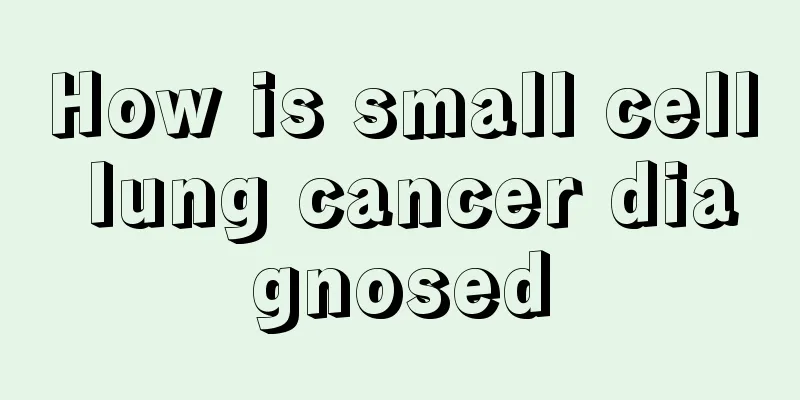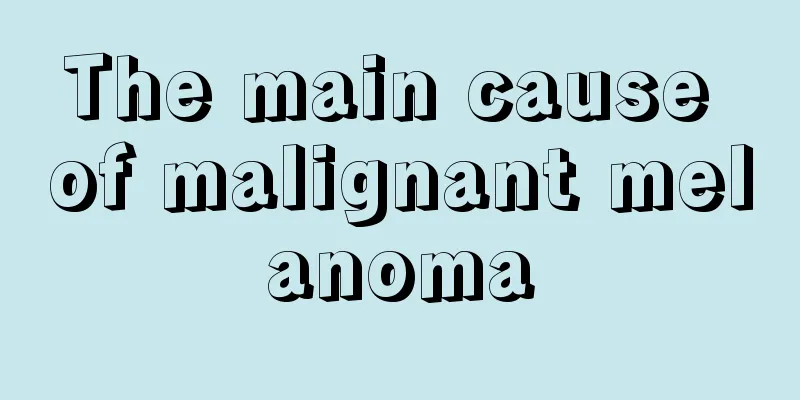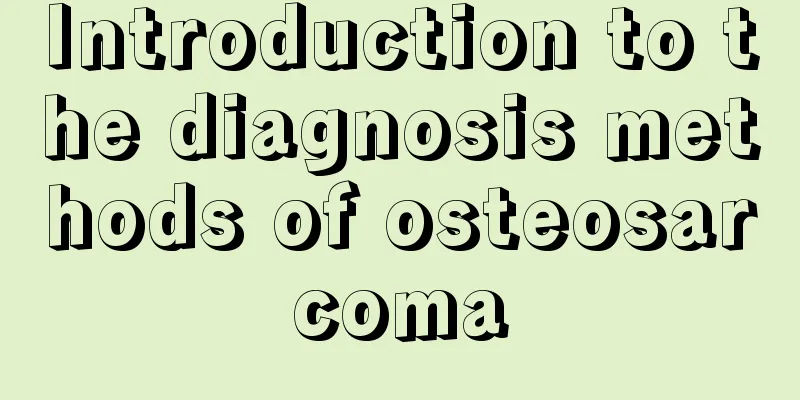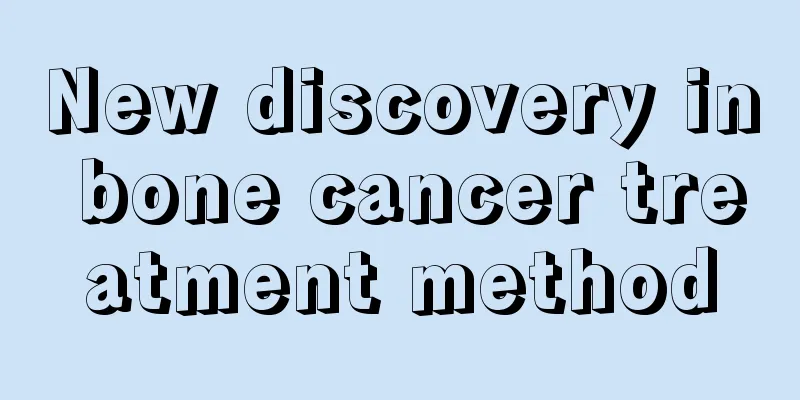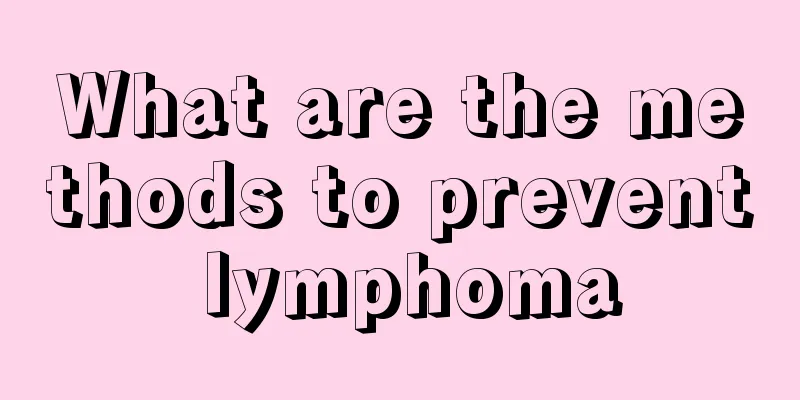How long can you live with testicular cancer
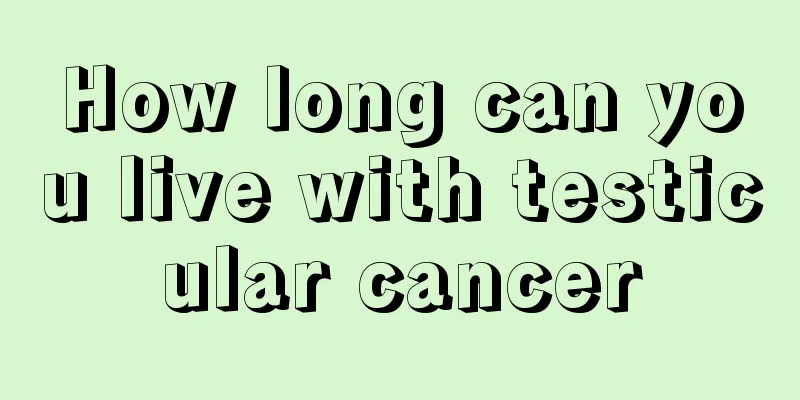
|
How long can a patient with testicular cancer live? Testicular cancer surgery involves removing the cancerous testicle, then performing a retroperitoneal lymph node dissection, and of course radiotherapy is essential. This may affect the patient's reproductive function. Of course, testicular cancer can also have bilateral lesions, and the consequence is infertility. So, how long can a patient with testicular cancer live? There is no clear answer to how long a person can live with testicular cancer, because each person's physical fitness, disease severity, psychological factors, treatment conditions and other factors are different. Adjusting your mentality, actively cooperating with treatment, and using radiotherapy, chemotherapy and biological treatment can alleviate symptoms, improve quality of life and prolong survival. 1. Orchiectomy The operation uses an oblique incision in the groin, reaches above the scrotum, separates the spermatic cord, ligates and cuts the spermatic cord and blood vessels at the internal inguinal ring, and then removes the testicle and its tumor. 2. Retroperitoneal lymph node dissection After orchiectomy, retroperitoneal lymph node dissection should be performed, and patients in stage I and II can be cured. Retroperitoneal lymph node dissection is performed through a midline incision from the xiphoid process to the pubic symphysis. The resection range includes the upper limit to 2 cm above the bilateral renal pedicles and the renal pedicles, the abdominal aorta and the inferior vena cava to the iliac blood vessel intersection and the upper 1/3 of the ipsilateral iliac blood vessel, both sides to the bilateral ureters and spermatic cord, and all lymph nodes, fat and pedicle tissue in the fascia around the ipsilateral kidney. 3. Resection of isolated pulmonary metastases (rare) For patients with lung metastases, after a certain period of observation and chemotherapy to suppress the lung lesions and no new lesions appear, surgical resection can be considered in order to achieve a cure. 4. Radiation therapy Radiotherapy is one of the indispensable means for testicular tumors. (1) Preoperative irradiation is suitable for embryonal tumors and malignant teratomas, and is mostly used when testicular tumors or abdominal metastases are huge and surgery is estimated to be difficult. The general irradiation dose is about 10 Gy. (2) Postoperative irradiation is suitable for early cases, such as irradiation of the lymphatic drainage area after orchiectomy; or for local tumors in the late stage, no mass is felt in the abdomen, but metastasis is confirmed or estimated by lymphangiography; or for those with positive pathological examination or incomplete removal after retroperitoneal lymph node removal; or for those with late-stage tumors with intra-abdominal metastasis, supplementary radiotherapy is performed after palliative resection. The method is: currently, "five-field irradiation therapy" is mostly used, namely, above the pubic bone, umbilicus, lumbar spine, upper abdomen, and lower chest. The irradiation dose is as follows: ① Seminomas: preventive irradiation is 25-30Gy, and the treatment dose is 30-35Gy/3-4 weeks; ② Embryonic carcinoma and malignant teratoma: irradiation dose is 40-50Gy/4-5 weeks. 5. Chemotherapy Patients with stage II or III disease who are not suitable for or do not want surgery; patients with local tumors limited to the testicles, but with cancer infiltration in the tissues after removal of the retroperitoneal lymph nodes; maintenance or salvage treatment after complete or partial remission after surgery, radiotherapy, or chemotherapy. 6. Drug chemotherapy Single-agent chemotherapy still has a certain effect on testicular tumors. (1) Cisplatin (DDP) Adults take 20-50 mg per day, divided into 3-6 doses; or 150 mg each time, repeated after 3 weeks, 300 mg per course of treatment, can be used repeatedly. The main side effects are gastrointestinal reactions (nausea, vomiting) and renal toxicity. Antiemetic drugs should be actively used and hydration should be performed. (2) Bleomycin (BLM) is administered intravenously at a dose of 30 mg per time for adults, once a week for 12 weeks. The total dose is 300-600 mg. The main side effects are fever, pulmonary fibrosis, and skin pigmentation. (3) Phenachlorfenapyr (sarcolytic agent) is generally 25-50 mg each time, once a week, orally or intravenously, with a total amount of 180-200 mg. The main reactions are gastrointestinal reactions and bone marrow suppression. 7. Combined chemotherapy Systemic combined chemotherapy for testicular tumors is a relatively effective treatment method, with high complete remission rate and long-term survival rate, and is currently widely used. There are many chemotherapy regimens, which are not listed here one by one. Please refer to the regimen given by your attending physician. 8. Interventional radiotherapy Testicular tumors are prone to lymphatic and blood metastasis. Interventional radiology arterial regional chemotherapy and lymphatic perfusion chemotherapy play an important role in improving the prognosis, especially for patients in the middle and advanced stages. For patients with regional lymph node metastasis, bilateral internal iliac artery infusion chemotherapy and lymphatic vessel infusion chemotherapy are selected. 9. Immunotherapy The cause of malignant tumors is the factor of reduced immunity of the body, and surgical treatment, chemotherapy, radiotherapy and other therapies have a certain degree of suppression on the body's immune system. Therefore, in the comprehensive treatment measures of malignant testicular tumors, immunotherapy can still play a certain role as an auxiliary therapy. |
<<: Is the mortality rate of testicular cancer high?
>>: Traditional Chinese medicine remedies for treating bile duct cancer
Recommend
Can I drink red wine if I am allergic to alcohol
There are many types of alcohol in life. In fact,...
Treatment of acute bronchitis
Acute bronchitis is an acute inflammation of the ...
There is a white hair on the leg
It is normal to have hair on the body, especially...
What causes throat cancer
Laryngeal cancer is usually caused by bad living ...
How to treat nasopharyngeal carcinoma in the late stage of radiotherapy
How to treat nasopharyngeal carcinoma in the late...
Toxicity of cypermethrin to humans
People who grow crops know that there are usually...
My skin is a little red and itchy after washing my face with cucumber
Cucumber is the common cucumber in people's d...
How long can a person with nasopharyngeal cancer live? How to take care of him after radiotherapy
How long can a patient with nasopharyngeal cancer...
How do the parasympathetic nerves control muscles
The parasympathetic nervous system is very import...
Methods for the diagnosis of rectal cancer
Rectal cancer is a disease with no obvious early ...
A comprehensive list of reasons for growing canine teeth
Many people have canines on both sides of their t...
What diseases does the mental health department treat?
With the development of society, what people purs...
What should I do if my ears are swollen? These swelling reduction measures must be learned
The ears are protrusions that grow on both sides ...
How to remove double eyelid tape
Double eyelid tape is a temporary method of creat...
What causes chest tightness and shortness of breath in young people?
If young people experience symptoms of chest tigh...


